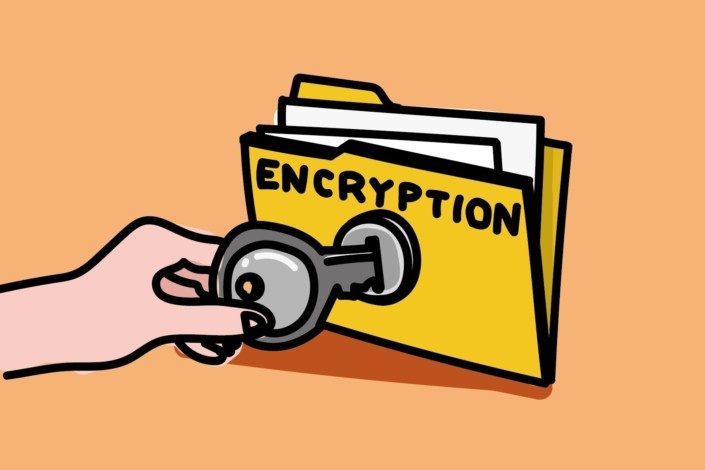Do you know what end-to-end encryption means? Can you find out who knows what about your encrypted communication? Test your knowledge!
#1. What is encryption?
If you answered a):
No. Encryption does not make involved parties or the message “invisible.” In fact, everything remains visible, but the message is encoded in a way that only authorised parties are able to read it.
If you answered c):
No. This is not what encryption means. This is only a protection of an account.
#2. In digital communication, there is a differentiation between metadata and content. Metadata is data about the communication, for instance who communicates with whom, when and where. Content is the communication itself, for example the text of an email. At what level is encryption useful to secure the communication?
No. Encryption largely targets communication content. The metadata mostly remains the same when a message is encrypted. Thus, the information of who communicates with whom, for instance, remains unencrypted.
#3. There are different types of encryption. What is transport encryption?
If you answered b):
No. What is described here is called end-to-end encryption. Transport encryption, however, means that the connection between computers and servers are encrypted, but not the message itself. This excludes adversaries during the transport from intercepting the message. However, every involved computer and server of the communication process is able to read the message.
If you answered c):
No. Transport encryption, however, means that the connection between computers and servers are encrypted, but not the message itself. This excludes adversaries during the transport from intercepting the message. However, every involved computer and server of the communication process is able to read the message.
#4. There are different types of encryption. What is end-to-end encryption?
If you answered a):
No. Encryption never makes a communication itself invisible.
If you answered b):
No. Also for end-to-end encryption, the sender and the recipient typically rely on servers in between, which transmit the message.
#5. Imagine you use an email provider that offers transport encryption over SSL/TLS by default, but no end-to-end encryption. What can the email provider, which may be legally bound to hand over your data to governments, see about your stored emails on their servers?
No. The email provider sees everything.







